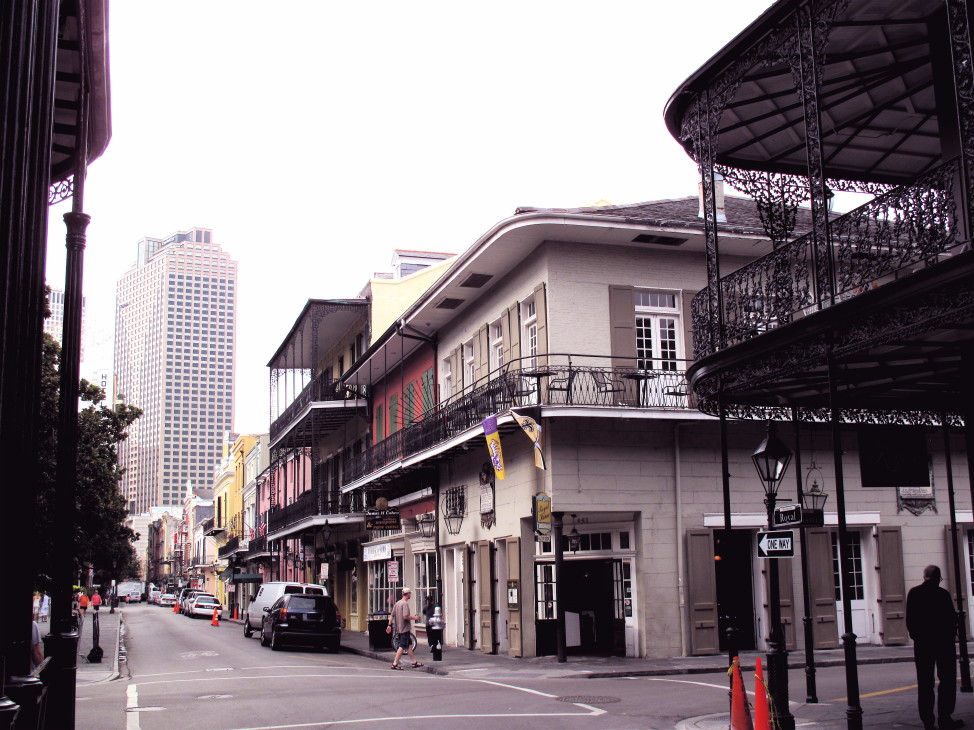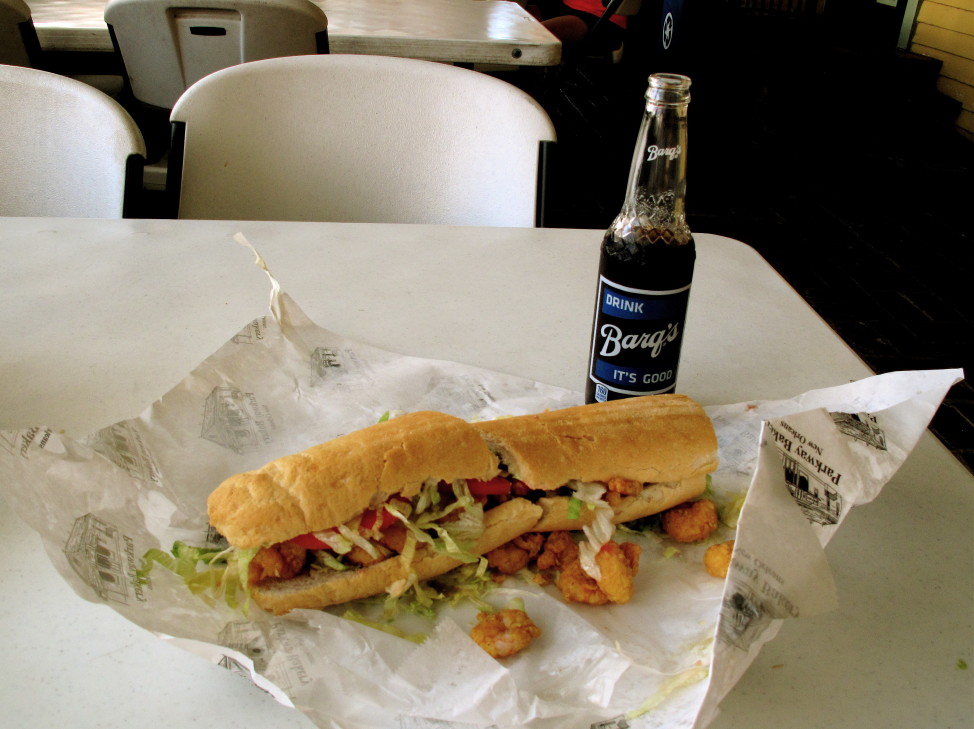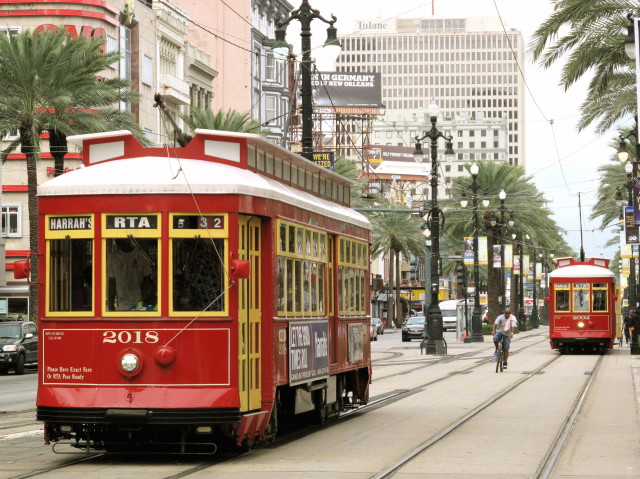
New Orleans’ architecture is a blend of 18th and 19th Century Spanish and French influences with modern skyscrapers in the background. (Photo by Jack Payton/VOA)
NEW ORLEANS — Let’s dispense with the obvious right up front: Most people know that New Orleans is one of America’s most fascinating cities. It has a long and storied history, unique architecture, terrific food, great music and a free-wheeling, let-the-good-times-roll attitude that’s unmatched anywhere in the U.S. – some say anywhere, period.
I’m certainly a big fan; have been for years. But then I could be a bit biased. I was born here, went to college here and got my first job as a journalist here more than four decades ago. So with that full disclosure out of the way, what about those things that make New Orleans a special place, the kind of place that draws visitors from all over the world?
Unique architecture? Just look at the pictures – that surprising blend of 18th and 19th Century Spanish and French influences with American Skyscraper modern in the background. You don’t see anything like it anywhere else.
And like the architecture, the food here also is a mixture of many influences: French, Spanish, native American, African, new American, and lately Asian, especially Vietnamese. Those first four give us what’s known as Creole cuisine and there are several famous restaurants here that feature it – Antoine’s, Galatoire’s and Arnaud’s are probably the best known.
The Superdome sits near downtown New Orleans like some giant flying saucer that landed here from another galaxy. On Sunday when the city’s beloved National Football League team, the Saints, are playing at home in the dome, it seems as if every resident of the city is dressed in black and gold, the team’s colors.
Serious rebuilding is under way throughout the central neighborhoods, but not so much in the poorer ones such as Treme and especially in the lower ninth ward, which was almost completely wiped out by Hurricane Katrina in 2005.
Where my two great aunts once lived next door to each other in the Mid-City area of town, there was more than three meters of water after Katrina. Both their houses were wrecked and uninhabited for several years. When I drove by them this week, they were all fixed up, freshly painted and looking almost new – well, as new as a 100-year-old house can look. Next door there is a crowded and trendy outdoor cafe where there was once a seedy corner bar that always smelled of stale beer, cigars and men who hadn’t been home in days.
This brings us to what started out as a New Orleans working-class specialty – the “Poor Boy” sandwich, said to have been invented in 1929 to feed striking trolley car workers – the original “poor boys.”
Now generally known as the “po’boy,” the sandwich is available in hundreds of places around town and in many other cities in America. It can be stuffed with roast beef and gravy, fried oysters or shrimp, spicy smoked sausage or any variation you can imagine. There’s even a Vietnamese po’boy that looks suspiciously like a Banh mi. The ones filled with fried oysters are often known as an “oyster loaf” or “peacemaker.”
The common element in all of them is the crusty loaf of bread baked here by a family of German ancestry named Leidenheimer. If it’s not on Leidenheimer’s bread, it’s not a real po’boy and serious eaters here won’t touch it – simple as that.

The Parkway Bakery in New Orleans makes a winning po’boy sandwich, served here with the city’s popular Barq’s root beer. (Photo by Jack Payton/VOA)
There are places all over the city that make good po’boys, but three have stood out for years – the Parkway Bakery near Mid-City, Domilise’s uptown and Johnny’s in the French Quarter.
Johnny’s in the Quarter, a block away from world famous Jackson Square, is certainly the most accessible. And that’s one of its problems. It’s overrun, mainly by out-of-towners. It’s the equivalent of urban warfare just to get one of the few tables. A relaxed afternoon of enjoying the sandwich, watching the game on the TV over the bar and knocking back a few beers is out of the question.
So for me, it’s simple. If I want a roast beef po’boy, I go to Parkway, where kicking back is just about mandatory and the sandwich is incomparable. If I want something else, say a smoked sausage po’boy or an fried oyster loaf – both on Leidenheimer’s bread – I go to Domilise’s, where nobody makes those sandwiches better. (A word of caution for potential visitors to Domilise’s; Dot Domilise, who ran the place for the past 70 years, died this past summer and it’s hard to say if the quality will be maintained).
People in New Orleans are extremely picky about what they put in their stomach. Almost always, they like food and drink from New Orleans. Some people think they’re parochial that way. I’m not one of them.
This is one of the few major American cities – maybe the only one – where the hamburger isn’t the most popular sandwich. Here it’s the po’boy. It’s also probably the only city where Coca Cola or Pepsi hasn’t always been the most popular soft drink. Here, again, it’s the locally made Barq’s Root Beer.
And New Orleans is also probably the only American city where Budweiser, Miller or one of the other national beer brands hasn’t always been the most popular. The best-selling beer for years here was Dixie, brewed in an old brick building just outside the downtown area.
But Dixie’s domination came to an end, like many things here, in 2005, when Hurricane Katrina flooded the city and destroyed the old brewery. It hasn’t been made in New Orleans since.
That’s why I was surprised to see it on the menu at the Parkway Bakery the other day. When I asked the waitress where it came from, she said Dixie’s owners had licensed a company somewhere in Wisconsin to brew it. And when I asked if it was as good as it used to be, she shrugged and said she hadn’t tried it. “It’s made in Wisconsin. How good could it be?”























I like this post. Long live to this new VOA blog